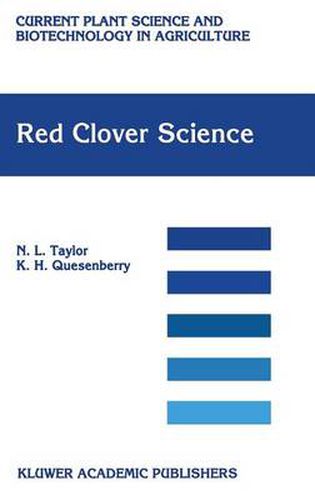Readings Newsletter
Become a Readings Member to make your shopping experience even easier.
Sign in or sign up for free!
You’re not far away from qualifying for FREE standard shipping within Australia
You’ve qualified for FREE standard shipping within Australia
The cart is loading…






This title is printed to order. This book may have been self-published. If so, we cannot guarantee the quality of the content. In the main most books will have gone through the editing process however some may not. We therefore suggest that you be aware of this before ordering this book. If in doubt check either the author or publisher’s details as we are unable to accept any returns unless they are faulty. Please contact us if you have any questions.
Red clover (Trifolium pratenseL. ) is an important forage of most ofthe tem- perate regions of the world, and atone time was the most importantlegume for hay in the United States. Oddly enough,red clover has never been the subject ofa monograph, although its culture has been discussed in many monograph chapters in the United States and Europe, perhaps beginning with those of Westgate and Hillman ina USDAFarmers Bulletin in 1911and early Swedish publications. The monograph CloverScience and Technology published in 1985 provides coverage of red clover along with other Trifolium species. It was theobjective of thepresentmonograph, Red Clover Science toexamine the literature published on red clover primarily after 1984. Perhaps the tim- ing of this publication is appropriate with the present interest in sustainable agriculture ofwhich red clover was so prominent in the past. Red clover and other forage legumes are valuable for reducing our reliance on fossil fuels, and for reducing pollution of our soil, water, and atmosphere primarily from use of chemical nitrogen and other fertilizers. In each chapter, an attempt was made to summarize the earlierinformation and to integrate the recent findings into this background. References earlier than 1984 are included only when necessary for historical purposes. No attempt was made to review the many aspects of clover culture that has been described thoroughly in earlier pub- lications. The literature covered is necessarily worldwide becauseofpresent greater emphasis in northern Eurasia than in United States.
$9.00 standard shipping within Australia
FREE standard shipping within Australia for orders over $100.00
Express & International shipping calculated at checkout
This title is printed to order. This book may have been self-published. If so, we cannot guarantee the quality of the content. In the main most books will have gone through the editing process however some may not. We therefore suggest that you be aware of this before ordering this book. If in doubt check either the author or publisher’s details as we are unable to accept any returns unless they are faulty. Please contact us if you have any questions.
Red clover (Trifolium pratenseL. ) is an important forage of most ofthe tem- perate regions of the world, and atone time was the most importantlegume for hay in the United States. Oddly enough,red clover has never been the subject ofa monograph, although its culture has been discussed in many monograph chapters in the United States and Europe, perhaps beginning with those of Westgate and Hillman ina USDAFarmers Bulletin in 1911and early Swedish publications. The monograph CloverScience and Technology published in 1985 provides coverage of red clover along with other Trifolium species. It was theobjective of thepresentmonograph, Red Clover Science toexamine the literature published on red clover primarily after 1984. Perhaps the tim- ing of this publication is appropriate with the present interest in sustainable agriculture ofwhich red clover was so prominent in the past. Red clover and other forage legumes are valuable for reducing our reliance on fossil fuels, and for reducing pollution of our soil, water, and atmosphere primarily from use of chemical nitrogen and other fertilizers. In each chapter, an attempt was made to summarize the earlierinformation and to integrate the recent findings into this background. References earlier than 1984 are included only when necessary for historical purposes. No attempt was made to review the many aspects of clover culture that has been described thoroughly in earlier pub- lications. The literature covered is necessarily worldwide becauseofpresent greater emphasis in northern Eurasia than in United States.